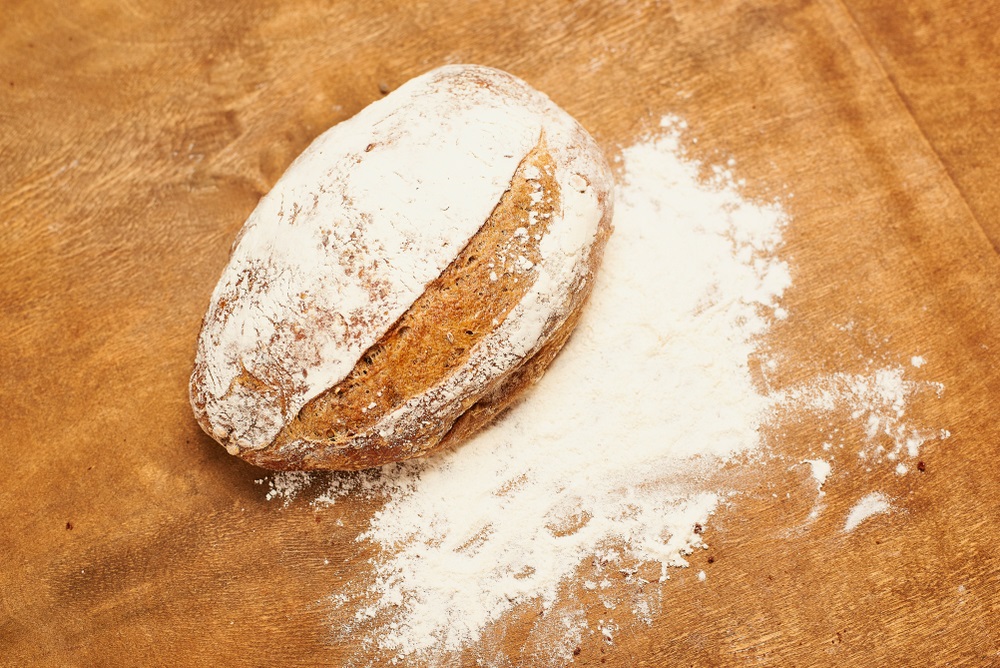Bread is one food item that constitutes a staple in the diet of the more substantial portion of the world’s population. An excellent ready-to-eat snack for midnight emergencies and a prominent feature in many food recipes, bread is a significant cornerstone of our diet and has been one for millennia.
The relatively low cost and high-calorie density of bread also make it one of the most popular food staples in the world. Hence, you can get different varieties of bread in various shapes and sizes and with differing constituents.
With bread going on sale regularly, there are always opportunities to stock up on some brown loaves.
However, with every purchase, you must consider the chances of spoilage and the average shelf life to avoid ending up with stale or spoiled bread.
Contents
Does bread go Bad?
Yes, it does. For all the new variants of bread and the barrage of innovation in breadmaking, one thing the industry haven’t figured out yet is how to significantly extend the shelf life of bread.
Compared to many other dry kitchen staples, bread has a relatively short shelf life. The primary reason for its rapid spoilage is that bread is vulnerable to mold growth. Mold growth in bread is further exacerbated by any exposure to moisture.
Furthermore, even perfectly good bread can go stale in a short while if it is not handled and stored correctly. Bread goes stale because the starch that makes up each loaf can quickly degrade if exposed to air or moisture.
Hence, if you want to enjoy quality bread for extended periods, you must adhere to several storing best practices.
How to Store Bread
There are three main options when it comes to storing bread: pantry storage, refrigeration, and freezing.
Pantry Storage
For freshly baked bread, most manufacturers recommend storing bread at room temperature in the pantry or kitchen. As long as the loaf stays in the original packaging, most loaves of bread do not require any added protection or special storage measures.
However, it is essential that you keep bread in a sealed package at all times to prevent exposure to moisture or air. Hence, once you open the package, you should consider transferring the remainder to a more secure bread box or plastic Ziploc bag.
Ensure to keep the bread in a cool, dry place and away from direct sunlight to further extend its shelf life.
Refrigerating Bread
Across bread enthusiast websites and self-proclaimed experts, there is much debate as to whether you should refrigerate bread or not.
BBC’s Science Focus, however, argues that the cold temperature help to exacerbate the recrystallization of the starch in the bread, making it stale faster. Starch recrystallization typically happens more quickly at cooler temperatures (unless it’s below freezing.)
However, if you store bread in a secure freezer bag that keeps it isolated from the inside of the fridge, you can reduce the chance of it going stale.
We recommend you use refrigeration only for bread prime for consumption within a couple of days.
Freezing Bread
Another alternative is to store bread in the freezer. The method typically offers the best results, especially if you are storing bread for more extended periods. Surprisingly, freezing helps to preserve the bread’s original taste and texture.
When freezing bread, it is often better to opt for a sliced loaf, as defrosting and slicing a frozen piece of bread may be tough to execute effectively. With slices, however, you can defrost the bread quickly by letting it rest on the counter or popping it into a toaster.
Before you freeze bread, you must package it in airtight freezer bags to keep out air and moisture. Properly sealing a loaf ensures that the bread retains its original constitution and texture
How Long does Bread Last?
The shelf life of a typical loaf of bread varies depending on the type of bread and its constituents.
However, irrespective of the bread’s make, adhering to the recommended storage guidelines in the previous section is guaranteed to add a few more days to your bread’s shelf life.
Store-bought bread usually lasts the longest, thanks to preservatives and superior packaging used in commercial bread making. A standard store-bought bread loaf will last around 5 to 7 days sitting in the pantry. This timeline applies to both whole grain, multi-grain, and white bread.
Putting store-bought bread in the fridge typically adds a couple of extra days, which properly frozen bread can; last for up to 3 months. However, frozen bread will gradually deteriorate over time. So, the faster you consume it, the better.
Homemade bread, on the other hand, has a relatively shorter shelf life. A homemade loaf can typically store for around 4-5 days in the pantry, 5-7 days when refrigerated, and up to 3 months in proper frozen conditions.
How to Know if Your Bread has Gone Bad
Since bread deteriorates so quickly, it is not uncommon to occasionally have a stale or moldy bread in your pantry.
The number one telltale sign of spoilt bread is mold. The first rule of eating bread is to immediately stop and discard that loaf if you find any form of mold growth. Mold growth is typically visible black, blue, white, or green spots on the bread that reach to the interior.
Furthermore, if your bread loaf tastes or smells sour or yeasty, you should toss the entire package. Follow this rule even if you do not find any mold growth on the surface.
Eating moldy bread could make you sick, and inhaling spores may trigger breathing problems if you have a mold allergy.
Stale bread, on the other hand, will not make you sick. However, it’s tough, and dry surface makes for an unpalatable experience. Hence, you have to make an executive culinary decision whether to proceed with the loaf or not.
If you choose to proceed with the stale bread, a typical hack to improve the taste is to heat it in a toaster or oven.
